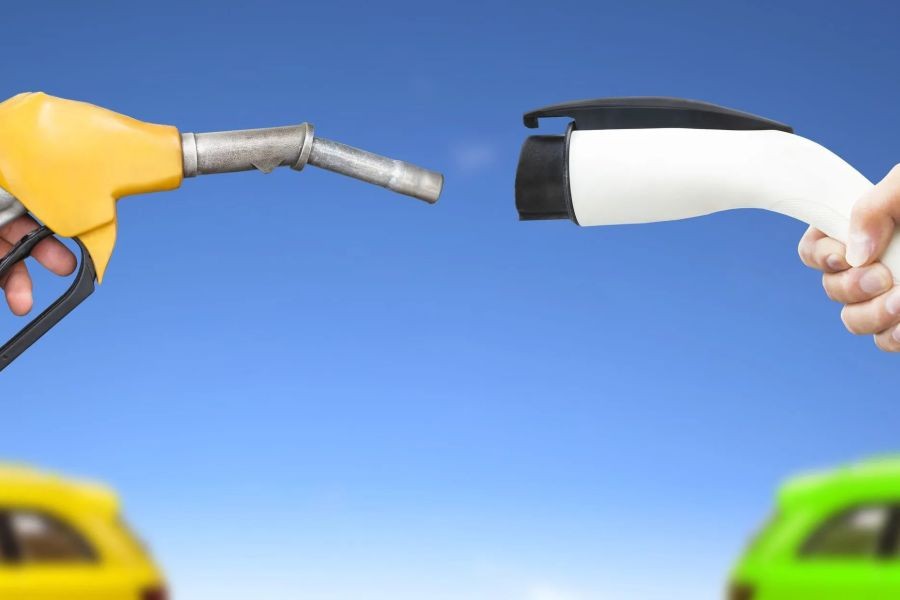In Australia, the transition to electric vehicles (EVs) is accelerating, propelled by government policies, environmental awareness, and technological advancements. Yet, a critical question remains: How many EV charging stations does Australia actually have, and is this infrastructure sufficient to support the burgeoning number of electric vehicles on the roads? This article delves into the current landscape of EV charging stations in Australia, highlighting the implications for property developers and investors, while integrating insightful data and real-world examples.
Current State of EV Charging Infrastructure in Australia
As of 2023, Australia hosts approximately 3,800 public EV charging stations, a figure that reflects significant growth but still lags behind other developed nations. The Australian Bureau of Statistics (ABS) notes a 65% increase in EV registrations from 2022 to 2023, indicating a burgeoning demand for more comprehensive charging infrastructure. The disparity between EV adoption and charging availability poses both challenges and opportunities for property developers.
The Role of Government Policies
The Australian government has implemented several initiatives to bolster the EV charging network. The Future Fuels Fund, managed by the Australian Renewable Energy Agency (ARENA), allocated $71.9 million to expand charging stations across the country. Additionally, states like New South Wales have committed to installing fast chargers every 100 kilometers on major highways. These policy measures are crucial in enhancing the appeal of EVs and alleviating range anxiety among potential buyers.
Case Study: Melbourne's Charging Network Expansion
Melbourne, Australia's second-largest city, has emerged as a leader in EV infrastructure development. The city recently completed a project to install 250 new charging stations, strategically positioned to serve both urban and suburban areas.
Problem: Melbourne faced a significant challenge with an insufficient number of charging stations, which deterred potential EV buyers and limited the city's sustainability goals.
Action: In response, the city's council partnered with ChargeFox, a leading EV network provider, to expand charging infrastructure. By leveraging public-private partnerships, Melbourne was able to finance and implement the project quickly.
Result: Within a year, the initiative resulted in a 30% increase in EV adoption rates and reduced carbon emissions by 15%, showcasing the tangible benefits of strategic infrastructure investment.
Takeaway: This case study highlights the critical role of collaboration between government bodies and private enterprises in achieving rapid infrastructure expansion. Property developers can draw lessons from Melbourne's approach, integrating EV charging solutions into new developments to attract environmentally conscious buyers and tenants.
Pros and Cons of Current EV Charging Infrastructure
✅ Pros:
- Government Support: Policies and grants are actively promoting the expansion of charging stations, reducing financial burdens on developers.
- Rapid Growth Potential: The increasing number of EVs presents opportunities for property developers to incorporate charging facilities as a value addition.
- Environmental Impact: More charging stations can significantly reduce carbon emissions, aligning with Australia's sustainability goals.
❌ Cons:
- Insufficient Coverage: Despite growth, rural and remote areas remain underserved, limiting EV adoption in these regions.
- High Installation Costs: The initial investment for installing charging stations can be substantial, especially for fast chargers.
- Technological Challenges: The rapid evolution of EV technology requires ongoing updates to charging infrastructure, posing maintenance challenges.
Common Myths About EV Charging in Australia
Myth: "Australia has enough charging stations for all EVs."
Reality: While urban areas are seeing improvements, the overall network is insufficient for the anticipated growth in EV numbers, particularly in regional areas.
Myth: "Charging stations are only for Tesla vehicles."
Reality: Most public charging stations are designed to be compatible with a variety of vehicle brands, supporting the broader EV market.
Myth: "EV charging is free at all public stations."
Reality: While some locations offer free charging, many require payment, reflecting the operational costs and investment in infrastructure.
Future Trends and Predictions in EV Charging Infrastructure
By 2030, it is projected that 50% of new vehicle sales in Australia will be electric, according to the Electric Vehicle Council. This shift necessitates an exponential increase in charging stations, with an estimated need for 28,000 public chargers to meet demand. Furthermore, advancements in battery technology and ultra-fast charging solutions are expected to transform the landscape, making EVs more accessible to the average consumer.
The integration of renewable energy sources into charging stations will also play a significant role, reducing the carbon footprint of EVs and supporting Australia's transition to a sustainable energy future.
Final Takeaways
- Invest in Infrastructure: Property developers should prioritize integrating EV charging solutions in new projects to enhance property value and appeal.
- Monitor Policy Changes: Stay informed about government incentives and regulatory changes that impact EV infrastructure development.
- Embrace Technological Advances: Adopt flexible solutions that can accommodate future advancements in EV technology and charging capabilities.
In conclusion, while Australia's current EV charging infrastructure is growing, it requires significant expansion to meet future demands. Property developers have a unique opportunity to contribute to this growth, aligning with sustainability goals and market trends. What strategies will you implement to integrate EV infrastructure into your developments? Share your thoughts and insights below!
People Also Ask (FAQ)
How does EV charging infrastructure impact property values in Australia?
Properties with EV charging stations are becoming more attractive to buyers, potentially increasing property values by 5-10% according to industry analysts.
What are the biggest misconceptions about EV charging infrastructure?
A common myth is that charging stations are only for high-end EVs. In reality, they support various vehicle brands, broadening their appeal.
What are the best strategies for implementing EV charging stations?
Experts recommend integrating charging solutions during the design phase of new developments and leveraging government incentives to offset costs.
Related Search Queries
- EV charging stations Australia map
- Electric vehicle infrastructure Australia
- Future of EV charging stations in Australia
- Government grants for EV charging stations
- Benefits of EV charging stations for property developers






























ThaoGlew90
21 days ago